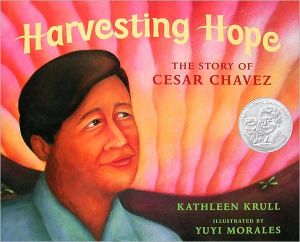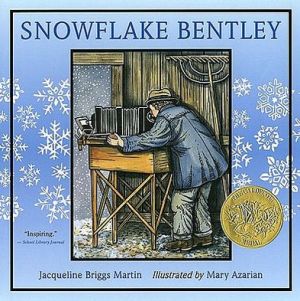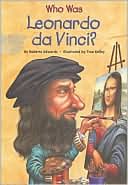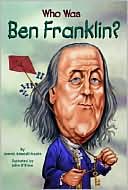Harvesting Hope: The Story of Cesar Chavez
Cesar Chavez is known as one of America's greatest civil rights leaders. When he led a 340-mile peaceful protest march through California, he ignited a cause and improved the lives of thousands of migrant farmworkers. But Cesar wasn't always a leader. As a boy, he was shy and teased at school. His family slaved in the fields for barely enough money to survive.\ Cesar knew things had to change, and he thought that—maybe—he could help change them. So he took charge. He spoke up. And an entire...
Search in google:
Award-winning author Kathleen Krull celebrates our most important Hispanic civil rights leader.Publishers WeeklyKrull (Wilma Unlimited; the Lives of... series) turns readers' attention to Cesar Chavez (1927-1993), founder of the National Farm Workers Association and champion of migrant workers. A lyrical portrait of a glorious early boyhood on his family's Arizona ranch opens the sympathetic narrative and explains that drought forced the family off their land in 1937 and consigned them to the grueling life of itinerant manual farm labor. Krull selects details that the target audience will readily understand; for example, she notes that Chavez attended 35 schools (he left after eighth grade) and that a teacher once hung a sign on him that read "I am a clown. I speak Spanish." The author also stresses Chavez's struggles to overcome extreme shyness and his commitment to nonviolent means of protest, demonstrating the latter in a climactic account of the landmark farm workers' strike and protest march led by Chavez in 1965. Debut illustrator Morales's mixed-media, full-bleed art taps into folkloric qualities that enhance the humanity of the characters. Using the bright colors of Mexican art, she skews the landscapes to reflect the characters' emotions. Sweeping, organic brushstrokes often angle diagonally, painting purple skies above green California fields or dividing rows of brown earth. The visual statement is as powerful as the story. Ages 6-9. (May) Copyright 2003 Reed Business Information.
\ San Francisco Chronicle"One person can make a difference is a message that resonates throughout Krull's stirring biography..."\ \ \ \ \ Publishers WeeklyKrull (Wilma Unlimited; the Lives of... series) turns readers' attention to Cesar Chavez (1927-1993), founder of the National Farm Workers Association and champion of migrant workers. A lyrical portrait of a glorious early boyhood on his family's Arizona ranch opens the sympathetic narrative and explains that drought forced the family off their land in 1937 and consigned them to the grueling life of itinerant manual farm labor. Krull selects details that the target audience will readily understand; for example, she notes that Chavez attended 35 schools (he left after eighth grade) and that a teacher once hung a sign on him that read "I am a clown. I speak Spanish." The author also stresses Chavez's struggles to overcome extreme shyness and his commitment to nonviolent means of protest, demonstrating the latter in a climactic account of the landmark farm workers' strike and protest march led by Chavez in 1965. Debut illustrator Morales's mixed-media, full-bleed art taps into folkloric qualities that enhance the humanity of the characters. Using the bright colors of Mexican art, she skews the landscapes to reflect the characters' emotions. Sweeping, organic brushstrokes often angle diagonally, painting purple skies above green California fields or dividing rows of brown earth. The visual statement is as powerful as the story. Ages 6-9. (May) Copyright 2003 Reed Business Information.\ \ \ School Library JournalGr 3-6-The dramatic story of Chavez's 340-mile march to protest the working conditions of migrant farmworkers in California is the centerpiece of this well-told biography. Readers meet Chavez at his grandparents' home in Arizona where he lived happily amid a large extended family. His childhood was cut short when, due to financial difficulties, the family was forced to move to California to seek employment. After years of laboring in the fields, Chavez became increasingly disturbed by the inhuman living conditions imposed by the growers. The historic 1965 strike against grape growers and the subsequent march for "La Causa" are vividly recounted, and Chavez's victory-the agreement by the growers granting the workers better conditions and higher pay-is palpable. While sufficient background information is provided to support the story and encourage further research, focusing on one event makes the story appealing to younger readers. The text is largely limited to one side of a spread; beautifully rendered earth-toned illustrations flow out from behind the words and onto the facing page. A fine addition to any collection.-Sue Morgan, Tom Kitayama Elementary School, Union City, CA Copyright 2003 Reed Business Information.\ \ \ \ \ Kirkus ReviewsCesar Chavez, like his heroes Martin Luther King and Mahatma Gandhi, believed in non-violent change. He fought ceaselessly for the rights of migrant farm workers to have a decent living conditions and a living wage. Krull does not offer a birth-to-death biography, instead focusing on the influences of his early years, the organization of the National Farm Workers Association, and the first contract with the grape growers. She portrays Chavez as a quiet, patient, strong-willed man who believed implicitly in his "causa" and worked tirelessly for his people. She presents additional events in his life and the circumstances of his death in an author's note. Morales uses bright acrylic colors that flow across the pages, mirroring the constant movement in Chavez's life. The overall look of the work is reminiscent of a Diego Rivera mural. Krull and Morales introduce a long-neglected figure from recent history to a new audience in an informative, eye-catching manner. A notable achievement. (Biography. 8-12)\ \








